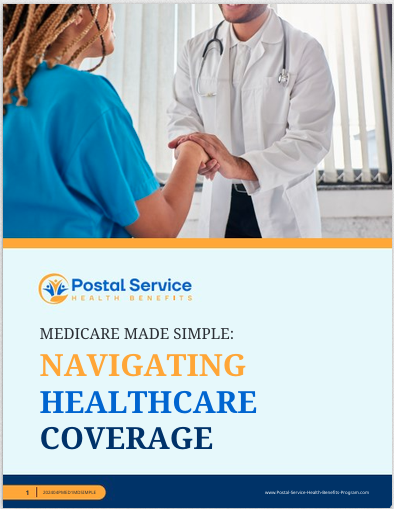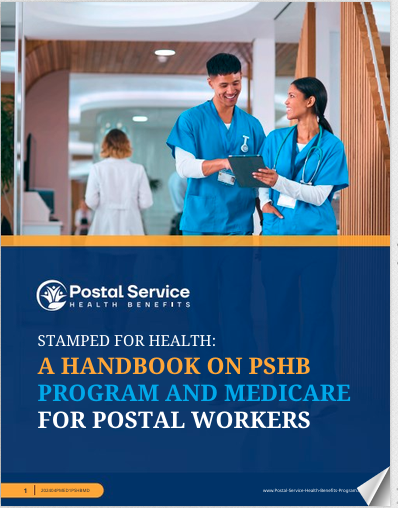Key Takeaways:
- Explore Your Options: This year marks the first time postal employees and retirees will enroll in the new Postal Service Health Benefits (PSHB) Program, which means familiarizing yourself with new choices and rules.
- Enrollment Deadlines Are Crucial: The PSHB Open Season runs from November 11 to December 9, 2024, and this is your opportunity to make decisions that will take effect on January 1, 2025.
Ready to Choose Your PSHB Plan? Here’s How to Get Started
Welcome to the 2024 Open Season for the Postal Service Health Benefits (PSHB) Program! This year is unique as it’s the debut of PSHB for postal workers and retirees, replacing the Federal Employees Health Benefits (FEHB) system. Whether you’re a longtime postal worker, recently retired, or preparing to retire soon, this is a chance to take a fresh look at your health plan options and ensure you’re covered in 2025 and beyond.
Let’s walk through everything you need to know, from the key enrollment dates to selecting the best plan for your needs.
What Exactly Is the PSHB Program?
The PSHB Program is a new healthcare benefits program designed specifically for postal employees, annuitants, and their eligible family members. Created as part of the Postal Service Reform Act, PSHB is tailored to postal workers’ unique needs and will fully replace the FEHB program for postal employees and retirees.
Key Features of PSHB
- Broader Choices: Like the FEHB program, PSHB offers a variety of health plans. Some plans within PSHB will likely feel familiar to FEHB enrollees, while others may be new.
- Medicare Coordination for Retirees: If you’re a Medicare-eligible postal retiree or the family member of one, note that PSHB requires Medicare Part B enrollment in most cases to maintain PSHB coverage.
- Transition for Current Enrollees: If you’re already enrolled in FEHB, your coverage will automatically transition to a PSHB plan that most closely resembles your current benefits. However, reviewing plan options to find the best match is highly encouraged.
Important Dates to Know
PSHB Open Season runs from November 11 to December 9, 2024. Any changes you make during this period will take effect on January 1, 2025.
Missing this deadline could mean waiting until the next Open Season (or a qualifying life event) to make changes, so be sure to mark your calendar.
Step 1: Understand Your Health Needs
Choosing the right plan starts with understanding your health needs and those of any family members covered under your policy. Ask yourself the following questions:
- How often do I or my family members visit the doctor?
- Do we take regular prescription medications?
- Am I or any family member expecting major medical treatments, surgeries, or procedures in 2025?
- What type of healthcare providers or specialists do we prefer?
Thinking through these questions will give you a clearer picture of what to prioritize, whether it’s lower premiums, broader provider networks, or specific coverage options.
Step 2: Explore Your Plan Options
During Open Season, you’ll be able to review various PSHB plan options. You can expect a variety of plans, such as high-deductible options, HMO plans, and plans with lower out-of-pocket costs.
Types of PSHB Plans
- Fee-for-Service (FFS) Plans: These plans allow you to visit almost any healthcare provider or specialist, making them a good choice if you prefer flexibility.
- Health Maintenance Organization (HMO) Plans: These plans require you to use a network of approved providers. They may be more budget-friendly but can limit your provider choices.
- High-Deductible Health Plans (HDHPs): These come with a higher deductible but can be paired with a Health Savings Account (HSA). HDHPs might appeal if you’re generally healthy and want to save on premiums.
Step 3: Pay Attention to Medicare Requirements for Retirees
Medicare-eligible retirees and their eligible family members need to be aware of Medicare Part B requirements within PSHB. If you are Medicare-eligible and still need to enroll in Part B, doing so is necessary to continue your PSHB plan coverage, unless you retired on or before January 1, 2025, and have an exemption.
Medicare and PSHB Enrollment
- Enrolling in Medicare Part B: Required to maintain PSHB coverage for most Medicare-eligible retirees and their family members.
- Coordination of Benefits: Medicare Part B will serve as the primary coverage for eligible services, and PSHB will act as secondary coverage, often lowering out-of-pocket costs for retirees.
This coordination can be beneficial, as it typically reduces out-of-pocket expenses and may broaden the range of covered services.
Step 4: Estimate Your Costs
When evaluating plans, it’s essential to look beyond monthly premiums and consider all potential costs.
Factors to Consider
- Deductibles: The amount you must pay out-of-pocket before your plan begins to cover expenses.
- Copayments and Coinsurance: How much you pay for services like doctor visits, hospital stays, and medications.
- Out-of-Pocket Maximums: The most you’ll pay for covered healthcare services in a year. Once you reach this limit, the plan covers 100% of eligible expenses for the remainder of the year.
Comparing these costs across plans can give you a clearer picture of what you might spend over the year, helping you avoid surprises.
Step 5: Check Provider Networks and Prescription Coverage
Health plans often have networks of preferred healthcare providers. If you have a favorite doctor, specialist, or hospital, ensure they’re included in the network of the PSHB plan you’re considering. Likewise, if you take specific medications, check the plan’s formulary (the list of covered drugs) to confirm your prescriptions are included.
Prescription Coverage
Different plans offer different levels of coverage for prescriptions. Some plans may cover only generic drugs, while others may cover both brand-name and specialty drugs.
- Tiered Formularies: Many plans categorize medications by tiers, with lower-cost drugs (often generics) in the first tier and higher-cost brand-name drugs or specialty medications in higher tiers.
- Mail-Order Options: Some plans provide mail-order pharmacies that may help save on long-term medications.
Step 6: Review Additional Benefits
Some PSHB plans may offer extra benefits like dental, vision, and wellness programs. While these add-ons shouldn’t be the main factor in your choice, they can enhance your overall coverage and potentially save you money on specific healthcare needs.
Common Additional Benefits
- Telehealth Services: Increasingly popular, telehealth services let you consult with healthcare providers virtually, often at a lower cost.
- Wellness Incentives: Some plans offer rewards or discounts for completing wellness activities, such as regular health screenings.
- Fitness Programs: Discounts on gym memberships or access to online fitness programs may also be included.
Step 7: Make Your Selection (And Don’t Miss the Deadline)
Once you’ve reviewed the plan options and considered your health needs, Medicare requirements, costs, and network preferences, it’s time to make your choice. Remember, Open Season runs from November 11 to December 9, 2024, and this is your primary window for making plan changes.
Your new plan choice, or any changes, will go into effect on January 1, 2025.
Looking Ahead: What to Expect in 2025
With the switch to PSHB, many postal workers and retirees can look forward to streamlined benefits and better coordination with Medicare. Taking the time now to understand the PSHB program will help ensure you’re covered effectively in the new year and can take full advantage of your benefits.
Keep It Simple: Tips for a Smooth Open Season
Here are a few final tips to help make your Open Season enrollment as smooth as possible:
- Use Available Resources: Take advantage of online tools and comparison resources available on the Office of Personnel Management (OPM) PSHB website.
- Ask Questions: If you’re uncertain about any aspect of your benefits or the enrollment process, reach out to your HR department or OPM.
- Double-Check Your Enrollment: After making your choice, verify that your enrollment is processed correctly and that you have the necessary confirmation for peace of mind.
Taking these extra steps can help you feel confident in your selection and avoid surprises come January.
A New Health Plan Era for Postal Workers
The transition to PSHB is a significant shift, but it also brings valuable opportunities to tailor healthcare to your specific needs. With the tools and tips in this guide, you’re ready to make an informed decision about your healthcare coverage for 2025.







